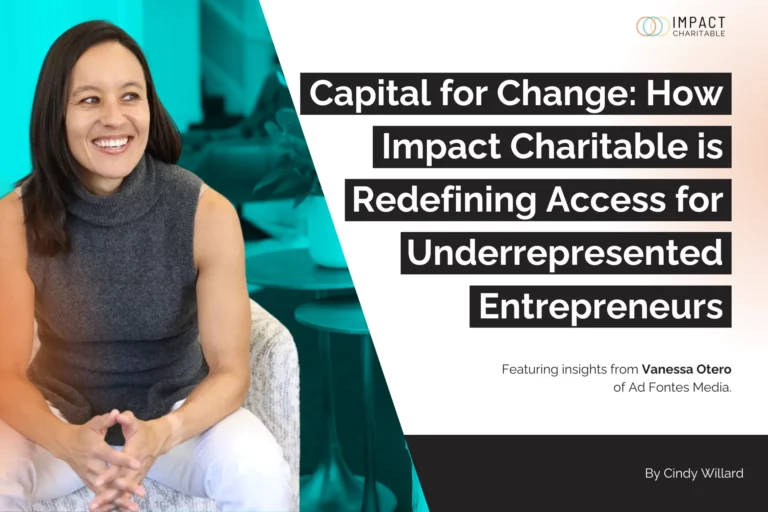In 2007, the Rockefeller Foundation convened a meeting of philanthropists, entrepreneurs, and investors at the foundation’s Bellagio Center on the shores of Lake Como, Italy for the purposes of discussing how a different approach to allocating investment capital could drive greater social and environmental impact, and the term “impact investing” was born. The term made its public debut in 2009, in Investing for Social and Environmental Impact: A Design for Catalyzing an Emerging Industry, a report from the Monitor Institute that was funded by Rockefeller, Annie E. Casey, W.K. Kellogg, and JPMorgan Chase Foundations. In the years since, the term “impact investing” has been used so widely, in so many contexts that it has lost its meaning.
Attempting to “cash in” on the halo effect around the movement to more responsible, thoughtful investing, asset managers across the globe have raced to add screens to existing funds, rebrand others or create new “thematic” funds by attributing them in a way that suggests they, too, are a part of the Impact Investing movement. Suddenly any investment that could possibly carry terms like ESG (Environmental, Social, Governance), sustainability or social responsibility are said to be impact investments making it extremely difficult to discern where real impact is happening as a result of investing.
Definitions matter: Consider the varying definitions that appear in the first page of results from an internet search.
- Impact investing is a general investment strategy that seeks to generate financial returns while also creating a positive social or environmental impact.
- Impact investing is the act of purposefully making investments that help achieve certain social and environmental benefits while generating financial returns. It’s a broad term that refers to everything from investing in companies with an explicit mission aligned with your values to avoiding investing in companies that do not meet those criteria.
- Impact Investing aims to balance social or environmental impact along with financial returns, ESG (Environmental, Social & Governance) investing and SRI (Socially Responsible Investing) are two approaches to impact investing.
- Impact investing refers to investments “made into companies, organizations, and funds with the intention to generate a measurable, beneficial social or environmental impact alongside a financial return”.
- Actively placing capital in enterprises, funds, projects that generate social or environmental goods, services, or ancillary benefits (such as creating jobs), with expected financial returns ranging from the highly concessionary to above market.
As noted above, there are a variety of definitions and while some of the differences are subtle, they are nonetheless really important. As you make your way through the definitions from top to bottom, you notice that the definition starts with generating financial returns (emphasis) while “also” considering environmental or social impact. Then you have social and environmental impact being placed alongside financial return. The third definition, the most commonly used one today, starts off nicely and then veers off course to include the whole range of more values-aligned investing including ESG, SRI and the like. Finally, you get to something that resembles the original definition, the intention of those gathered in Italy in 2007, where the INTENTION to generate a positive social and/ or environmental impact is ordered first before mentioning financial return.
Given the ubiquitous and currently generic use of the term, we at Impact Charitable, feel as if we need to take a stand by elevating the term, Impact-First Investing, as a way to continue to support the larger movement towards rethinking an approach to allocating capital that can help solve some of the more intractable problems our communities face. We appreciate what firms like Bridgespan have done (see below) to differentiate impact-first investments from finance- first impact investing. As noted earlier, ESG, SRI funds and others that target “market returns” while trying to be more thoughtful, are not bad in and of themselves, they simply are not impact-first investments as Rockefeller defined.

Through our range of investment services, we, at Impact Charitable, help to accelerate the flow of Impact First capital into deserving nonprofit, for-profit ventures, projects and funds. Our clients range from individual donors and investors to private foundations, family offices and government agencies. Our investments place the primary return focus on the impact for people and planet and consider the financial return in alignment with those positive outcomes.
Just in the past year, we have:
- Assisted a family office in making an equity investment in a tech startup providing tools that positively affect behavioral improvements and overall well-being among children in kindergarten through high school, piloted in Baltimore area schools.
- Facilitated the flow of foundation capital into an affordable workforce housing fund through our Program-Related Investment (PRI) Aggregator Services.
- Partnered with a government office to create and manage a low-cost, flexible, responsive loan fund to support BIPOC+ businesses.
- Aggregated capital from several individuals and foundations to provide a low-cost working capital loan to a social enterprise that provides home-delivered, WIC compliant groceries and fresh produce to low-income communities.
As such, we are fans of the definition offered by the Catalytic Capital Consortium: Impact-first impact investing, also called “catalytic capital,” is well-suited for investors “who want to support enterprises or funds that have high-impact potential but struggle to raise suitable financing because they are too early-stage or otherwise risky, expect to generate only modest returns, or require a longer investment time horizon.
Key characteristics that differentiates Impact-first investing from the more generic term:
Intention: The primary (first ordered) purpose of the investment is to help the investee (venture, organization project or fund) achieve measurable, positive social or environmental impact.
“But for” test: This test asks the question of whether or not the defined impact could be achieved “but for” the appropriately priced and structured investment (see “suitable” in the CCC’s definition above). One of the more clear examples is with affordable housing. Impact-first capital could comprise the total investment or a “catalytic” component of a more diversified capital stack (a component of impact-first capital that helps attract finance-first impact capital).
Modest return expectations: For any level of risk, impact-first investments will yield an average return lower than can be found in the market. Often funds or projects, even with government funding or tax credits are unable to sustain themselves without low-cost debt (e.g. 2-5%).
Why Impact-first investing is so important! Quite simply, the capital markets (investing and philanthropic) have been operating the same way for a LONG time and yet the social and environmental challenges facing communities across the globe remain as challenging, if not more, today as ever before. Rockefeller realized this and demonstrated leadership and courage in asking the hard questions around a new theory of change. What if we thought about allocating capital differently, specifically within the philanthropic sector? What if there was a space between investing for market returns and traditional grant-making that could help spur innovation, create more sustainable, scalable solutions? Impact-first investing demonstrates how taking a different approach to capital can result in a wide range of positive returns, both in impact and finance. Impact Charitable wants to build on the work of the visionaries who first envisioned a world with capital focused on the good. If you are ready to join us, we are here to help!






